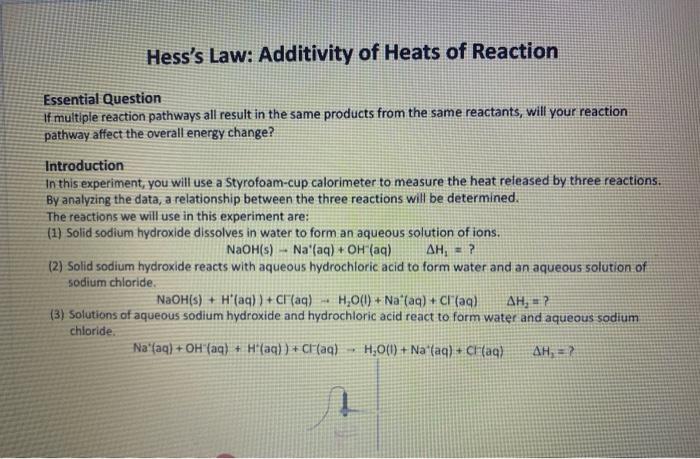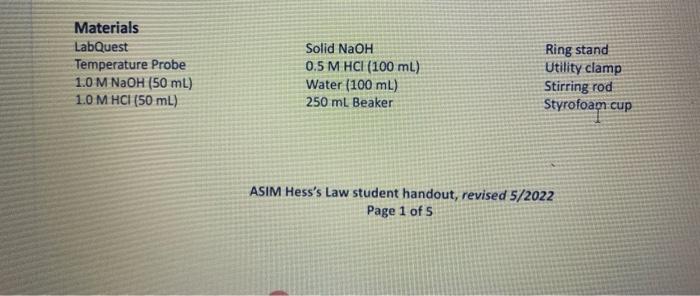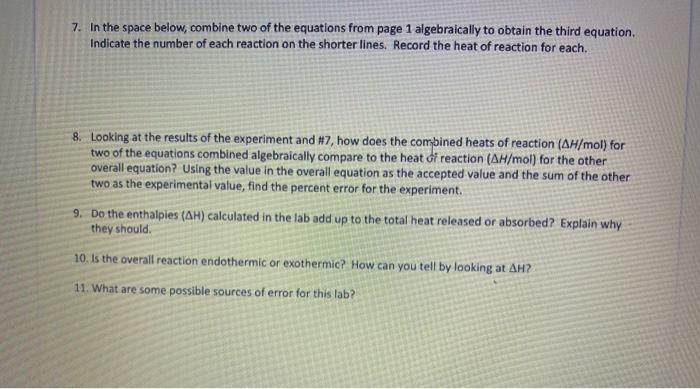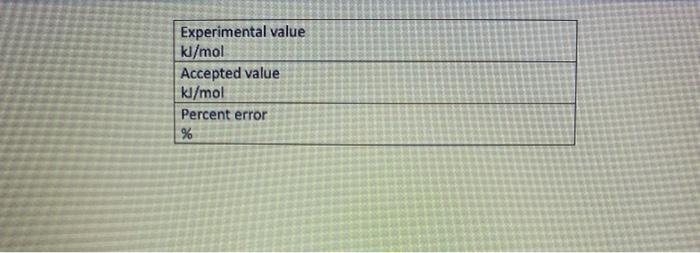Answered step by step
Verified Expert Solution
Question
1 Approved Answer
This is Hess's Law Please help me on 7,8,9,10,11 and also help me fil out in the table ( Experimental value, Accepted value, Percent error)
This is Hess's Law
Please help me on 7,8,9,10,11 and also help me fil
out in the table ( Experimental value, Accepted
value, Percent error)
Note in question 7: Combine two of equations
algebraically to obtain the third reactions
I include everything you guys need
Please help me
Information: 



Question:


Step by Step Solution
There are 3 Steps involved in it
Step: 1

Get Instant Access to Expert-Tailored Solutions
See step-by-step solutions with expert insights and AI powered tools for academic success
Step: 2

Step: 3

Ace Your Homework with AI
Get the answers you need in no time with our AI-driven, step-by-step assistance
Get Started


